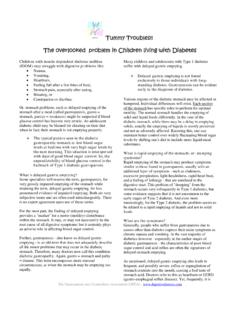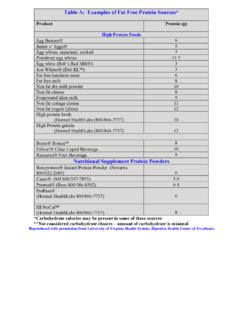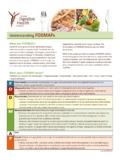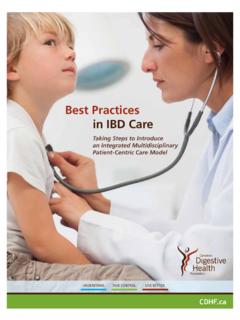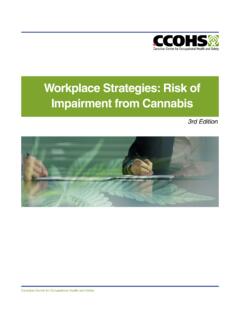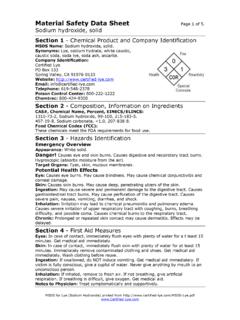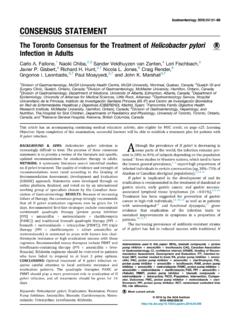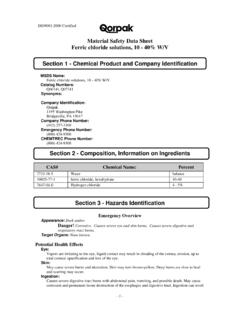Transcription of A Fact Sheet for Families: Gastrointestinal Motility …
1 The Gastroparesis & Dysmotilities Association November 28, 2007 All Rights Reserved A fact Sheet for families : Gastrointestinal Motility Disorders _____. Digestive Motility disorders represent a family of digestive problems caused by a poorly understood neuromuscular dysfunction of the gut, which may produce in any region of the digestive tract chronic motor and sensory disturbances characterized by weakened, spastic or failed propulsion ( Motility ) of food through the digestive system. These are real neurological disorders affecting the digestive tract leading to waxing and waning digestive symptoms or chronic disabling digestive symptoms for which there is little recognition. For many, symptoms show a clear pattern; often escalating 1-2 hours after a meal, then flaring again at bedtime, frequently disrupting sleep.
2 Symptom severity is also most intense upon awaking in the mornings. Digestive symptoms tend to be less intense in the late afternoon and early evening. Compared to all other illnesses, these digestive Motility disorders/diseases cause the highest rate of school absenteeism. 15% of middle school-aged children are affected on a weekly basis by abdominal pain caused by mid-gut Motility /sensory (abdominal pain after eating) disturbances, which, for many, may persist into adulthood. Frequently this family of digestive Motility disorders is wrongly mistaken for an eating disorder;. mothers may be accused of Munchausen's syndrome by proxy, or the child's psychological state of mind is blamed for the cause of their chronic digestive symptoms. Children and families must live with the unpredictable nature of digestive symptom flare-ups and rapidly exhausted treatment options.
3 Lack of awareness surrounding digestive Motility diseases/disorders is the largest challenge facing families who are in need of support and compassionate medical direction. Many community pediatric gastroenterologists have not been trained in the subspecialty of GI. Motility disorders; furthermore, they lack the specialized diagnostic tools, which are necessary to define and properly diagnose the nerve-gut motor disturbance. Therefore, since standard diagnostic work-ups often come back as normal, the physician is at a loss. The gastroenterologist who lacks time is quick to ascribe a psychological label to explain the child's chronic digestive symptoms. Children, who may appear well but are nevertheless suffering, must struggle against a lack of support from the medical community, their teachers, friends, and in some incidences, family, who do not understand the debilitating nature of their neurological digestive symptoms.
4 Frequent school absenteeism creates misunderstanding by school authorities which may wrongly lead to involvement of a truancy officer. families begin to feel abandoned by teachers and physicians. families become defensive as they perceive no one is listening. Frustration sets-in for all. Absenteeism has the child falling further behind in classroom work adding to the child's stress and depression. Positive intervention can be achieved through the initiation of an individual education plan (IEP), or a 504 plan. In Canada, an individualized program plan (IPP) should be started. GPDA: 5520 Dalhart Hill NW, Calgary, AB T3A 1S9 Tel: 403-247-3215, , The Gastroparesis & Dysmotilities Association November 28, 2007 All Rights Reserved Upper-gut Motility disturbances: Upper-gut Motility disturbances loosely referred to as dyspepsia when affecting the upper digestive tract may be found in association with delayed gastric emptying.
5 However, standard diagnostic tests may all be normal, including a normal emptying stomach. Many medical centers lack specialized tools needed to uncover the Motility dysfunction. Nerves within the stomach may affect the organ's electrical activity. As well, a dysfunctioning of the autonomic nervous system combine as the occult culprits to digestive symptom generation. Greater intensity of dyspeptic symptoms results in dyspeptic disorders as being labeled: gastroparesis ( gastro meaning stomach and paresis' meaning weakness ); a serious, chronic, debilitating digestive disease characterized by severe: nausea, vomiting spells, abdominal discomfort or pain, and/or other upper-gut symptoms. Weight loss may become significant and necessitate the placement of a feeding tube from the nose, across the abdomen or across the chest wall.
6 Eighty percent of those diagnosed with gastroparesis are young women for whom no identifiable cause of their gut-nerve malfunctioning can be found. Heartburn affects 10% of Americans on a daily basis and, in half of this group, is caused by a motor disturbance of the stomach that results in delayed gastric emptying. The ensuing symptoms of bloating, a feeling of fullness with abdominal discomfort, and nausea cannot be addressed by acid-suppressing drugs alone. Heartburn can be serious, leading to reflux pneumonia. Swallowing difficulties and food getting hung up in the throat may signal the beginning of a more rare and debilitating nerve motor disturbance within the esophagus known as achalasia. Affecting men and women equally, achalasia may develop in early childhood or adolescence and may take a decade before being properly diagnosed.
7 Mid-gut Motility disturbances: Milder forms of uncoordinated and sluggish transit of food through the mid-gut, with the characteristic feature of overwhelming abdominal pain, are referred to by doctors as functional abdominal pain. Bloating, belching, nausea and vomiting may come in episodes, often triggered by the simple act of eating. Children may begin to develop food jags, anorexia, or food avoidance in order to moderate digestive symptoms. Frequent misdiagnosis as an eating disorder may occur. Chronic intestinal pseudo-obstruction a more severe form of mid-gut Motility disturbance causing severe abdominal pain associated with severe constipation, episodic, nausea, vomiting and profound malnourishment primarily affects young females. Often initially misdiagnosed as an eating disorder, chronic intestinal pseudo-obstruction may take up to ten years before being accurately diagnosed.
8 Lower-gut Motility disturbances: Chronic constipation caused by Motility disturbances of the lower digestive tract, for many begin in childhood and persists into adulthood. Constipation for those with digestive Motility problems is much more than a mere nuisance. Constipation of this nature may be so disabling to the sufferer as to vastly restrict social functions and activities. Irritable bowel syndrome (IBS) is the best recognized Motility disorder affecting 20% of the North American population. It is not an uncommon problem resulting after some types of food poisoning, or stomach viruses, leading to years of abdominal pain, change in bowel habits, bloating and discomfort. The Gastroparesis and Dysmotilities Association is a registered Canadian, non-profit association dedicated to advancing awareness, providing accurate information, and support for research into gastroparesis and related digestive Motility diseases.
9 GPDA: 5520 Dalhart Hill NW, Calgary, AB T3A 1S9 Tel: 403-247-3215.

